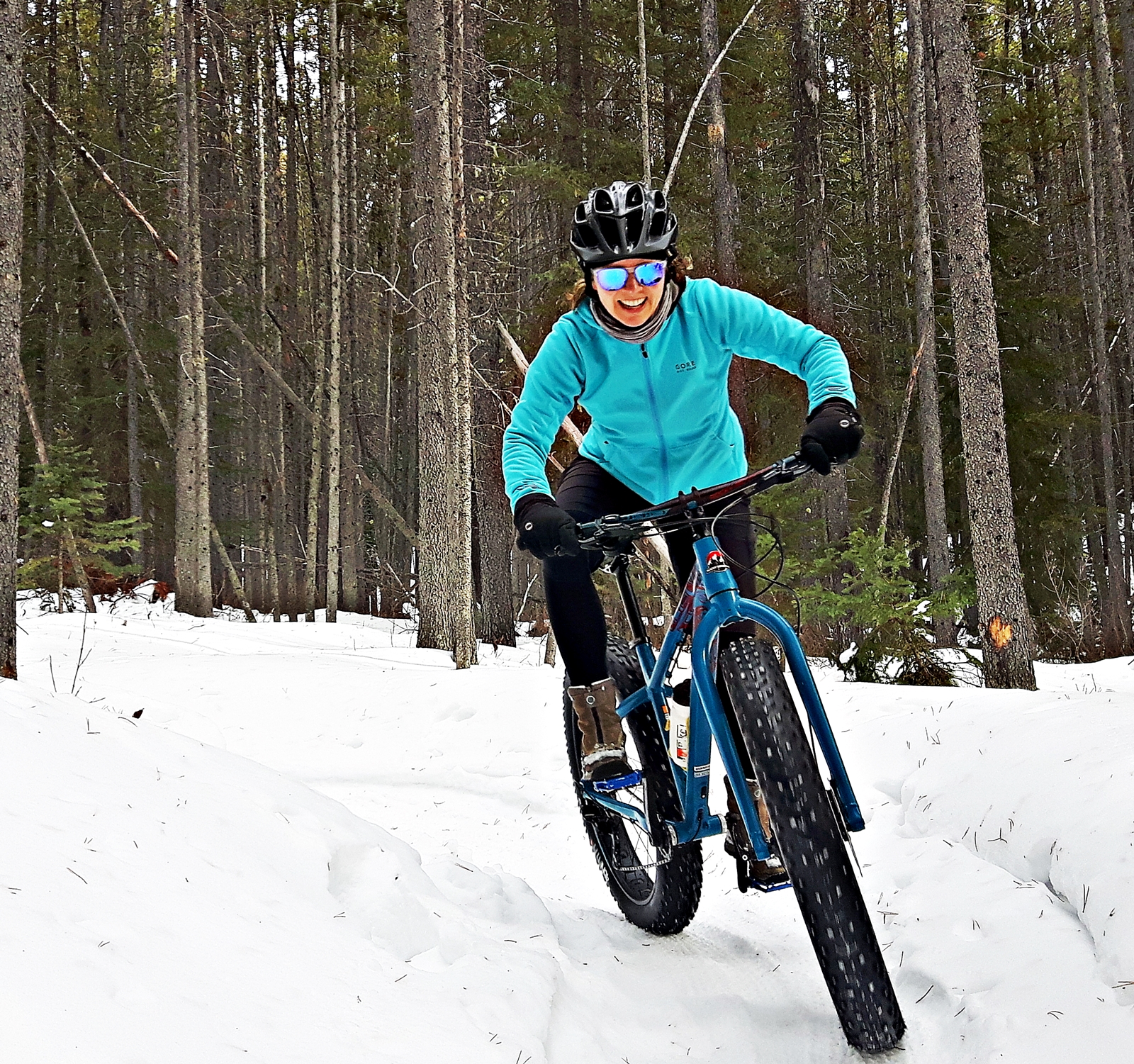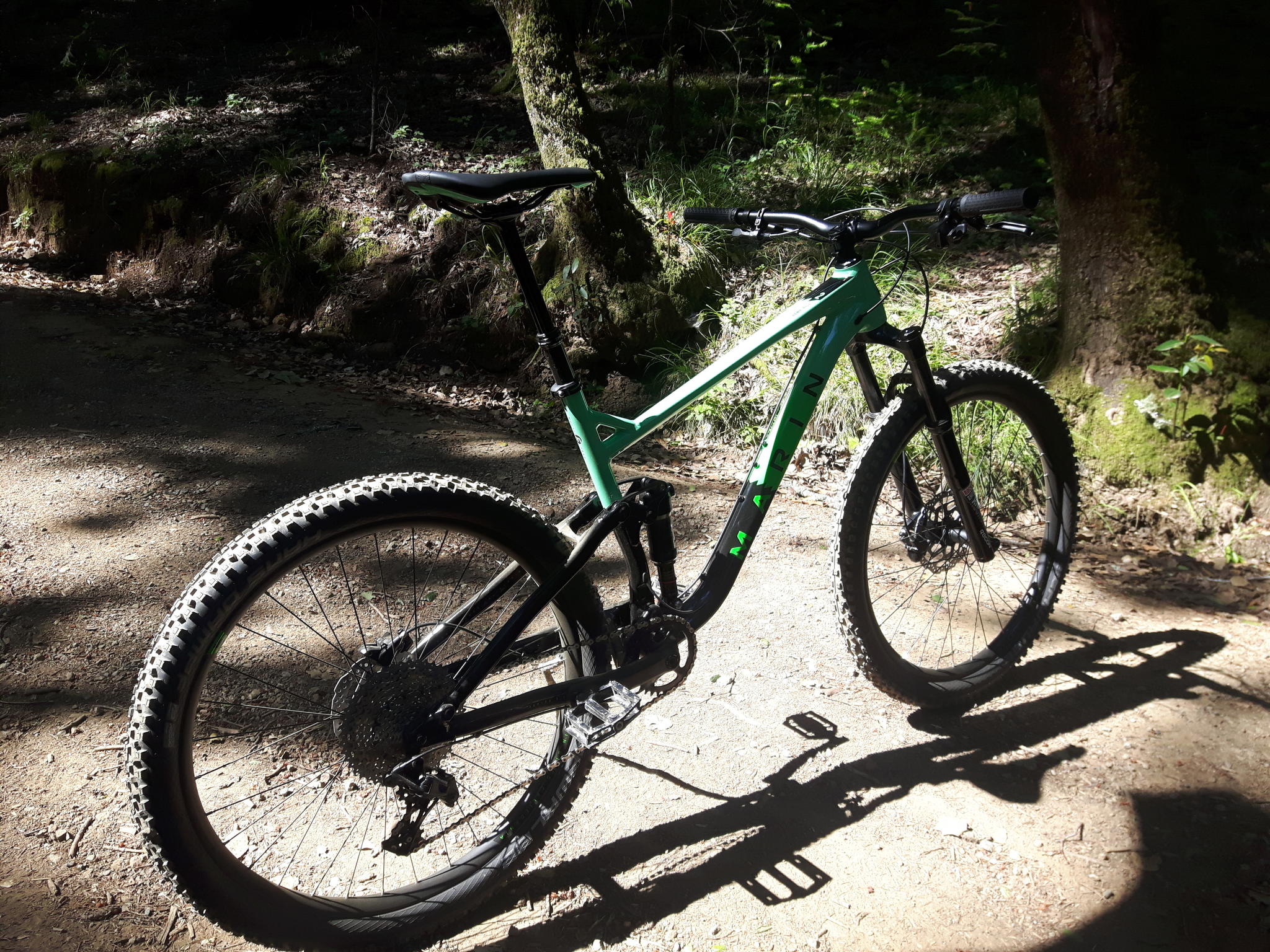Types of Mountain Bikes : Understanding the categories
- Posted on
- By Graham
- Posted in categories, mountain bike, naming, types
- 0

For those not immersed in mountain bikes, the terminology used to describe different types of bikes must be so confusing. In this article we quickly cover the common categories of mountain bikes and terminology related to mountain bikes.
Types of mountain bikes
Hardtail: A bicycle with a suspension fork and rigid frame. (front suspension only). Hardtails are the most affordable version of mountain bikes but can also get quite expensive as there are high-end versions for XC, Trail and All-Mountain purposes.

An Example of a Trail Bike Hardtail 27.5 Plus Bike in Action. Yes, some of the different things we talk about here can be combined to describe a bike.
Dirt Jumper: While the name might make you think these are for dirt only, they can be good for skateparks, street riding and indoor bike parks like BLine. These bikes are built to be stiff and agile (like a big wheeled version of a BMX) with 26" wheels, small frame and typically a suspension fork that is set up very stiff.
Full Suspension: A bike with suspension in the frame and fork. These can range from low-tech "pogo sticks on wheels" like the stuff you see at department stores to bikes that we sell (bikes that actually enhance your riding experience.)
27.5 or 650B: This refers to wheel size - 27.5" is roughly the outside diameter used on these bikes. 650B is the same as 27.5", just a different naming convention. Modern mountain bikes (except dirt jumping mountain bikes which still use 26" wheels) use either 27.5" wheels or 29" wheels with a trade off of maneuverability vs stability being the reasoning (27.5" more maneuverable, 29" more stable). There are other subtle differences too
29er: A mountain bike with 29" diameter wheels. 29ers are known for stability and are becoming widely used in a variety of mountain bike racing disciplines as they're thought to be a quicker option.
Plus Bike: A mountain bike designed to have tires between 2.8" and 3.2" wide. These can be on 26", 27.5" or 29" wheels. Advantages of larger volume tires are increased bump absorption, better traction (for cornering and braking) and some studies show plus tires can be faster.
Fat Bike: A mountain bike with tires 3.8" to 5" wide. Most often used on snow or sand but some people ride them all year. Tires are often run at very low pressure, like 5psi, for optimal snow traction. Studded Tires are also very desirable (almost a must when fat biking in the Calgary region).

Single Speed: This proud sub-culture of mountain bikes and riders use only one gear on their bikes. This is "that next level" for ultra fit riders looking for additional challenge. It also means less mechanical issues to deal with and a style of riding where the rider's skills must increase.
Geometry: In cycling, this is a general term to sum up the length, position or angle of different tubes. Changing a bike's geometry can affect both the comfort of the rider and how well the bike performs in different situations.
XC Bike: Cross Country (XC) Bikes are light mountain bikes that are designed to put the rider in a powerful position - especially for climbing. These can be either hardtails or full suspension with less than 4" of travel (typically). XC bikes tend to favor light weight and efficient climbing over descending. XC bikes, while quick and efficient, can be either uncomfortable on longer rides or require the rider to be more focused due to the quicker handling nature.
Trail Bike: These bikes, typically with 5" to 6" of travel, are designed to be as good for climbing as descending. The rider's position is more relaxed than an XC bike with slightly slacker angles than the XC bike to add to stability - especially when descending, while still maintaining a relatively light weight.
 An example of a modern 27.5" wheel, full suspension trail bike. The Marin Hawk Hill 2 is a great example of a quick, agile, fun trail mountain bike.
An example of a modern 27.5" wheel, full suspension trail bike. The Marin Hawk Hill 2 is a great example of a quick, agile, fun trail mountain bike.
All Mountain Bike: Favoring more aggressive downhills, the All Mountain Bike is still a capable climber even with 6"to 7" of travel. While the All Mountain bike is capable of riding uphill, it will take more energy and skill. Compared to trail bikes, these are often a bit heavier with slacker headtube angle and wheels/tires more designed to handle abuse. Sometimes All-Mountain and Enduro are used interchangeably.
Enduro Bike: A subtle increase in focus on descending speed compared to an All-Mountain bike. Suspension can reach 180mm on some of these and a bit more emphasis on durability.
Freeride Bike: Pedalling efficiency is not a major concern on freeride bikes. These bikes are designed for stability and strength. Usually ridden at ski hills or places where using a truck to shuttle to the top of a trail is possible. This term is fading a bit as these buyers often end up on All-Mountain or Enduro bikes now.
DH Bike: Downhill (DH) bikes are similar to freeride bikes but more emphasis is put on the bike's stability - both with the geometry and amount of suspension (8" to 10" of travel).
E-MTB / E mountain bikes / Electric Mountain Bikes: Almost every type of mountain bike is now also available in an electric version. These are typically "pedal assist" e-bikes, meaning you have to pedal (no throttle) and the motor will amplify the power exerted by the rider.

Comments
Be the first to comment...